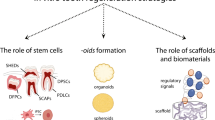Abstract
Evaluation of the prenatal toxicity of a substance in rats or other animals according to the current guidelines is often hampered by the rapid metabolism of the test compound and/or by maternal toxicity. One example for such a compound is moxifloxacin. In vitro systems offer the possibility to study the direct effects of the test compound on embryonic tissues. The aim of this study was to evaluate the embryotoxic potential of moxifloxacin in vitro using the murine limb bud culture. Clinafloxacin, which was found to be teratogenic when tested in rats, was used for comparison. The effects of various concentrations of moxifloxacin (10, 30, 60 and 100 mg/L) and clinafloxacin (3, 10 and 30 mg/L) on growth and differentiation of 12–day-old murine limb buds were studied in a standard and in a magnesium-deficient medium. After termination of the culture, the respective front limb buds were examined by different methods. Clinafloxacin showed clear-cut effects at a concentration of 30 mg/L in both media. Effects were similarly pronounced as the effects observed with moxifloxacin at a concentration of 100 mg/L. Lower concentrations of moxifloxacin, which are achieved during therapy in humans, did not impair growth and differentiation of limb buds. Using electron microscopy, slight ultrastructural changes could be seen after exposure to 3 mg clinafloxacin/L medium. Ultrastructurally, clinafloxacin caused a concentration-dependent decrease of the extracellular matrix, swelling of cell organelles and at higher concentrations necrotic chondrocytes. These effects were significantly enhanced in a magnesium-deficient medium. In conclusion, the effects of moxifloxacin on murine limb buds in vitro were definitely less pronounced than those of clinafloxacin. Effects on growth and differentiation occurred with moxifloxacin only at concentrations that are higher than plasma concentrations observed during therapy. This result is of special interest, because due to rapid metabolism of moxifloxacin in rats results from a routinely performed segment II type study cannot be used for a risk assessment.


Similar content being viewed by others
References
Bayer Health Care Pharmaceuticals (2008) Avelox full prescribing information. http://www.avelox.com. Accessed 21 Nov 2009
Courtney CL (2000) Cecal torsion in rodents associated with chronic administration of clinafloxacin. Toxicol Pathol 28:643–648
Förster C, Rücker M, Shakibaei M, Baumann-Wilschke I, Vormann J, Stahlmann R (1998) Effects of fluoroquinolones and magnesium deficiency in murine limb bud cultures. Arch Toxicol 72:411–419
Henck JW, Dostal LA, Anderson JA (1996) Developmental toxicity of clinafloxacin hydrochloride, a quinolones antiinfective agent. Teratology 53:112 (abstract)
Kim JC, Yun HI, Shin HC, Han SS, Chung MK (2000) Embryolethality and teratogenicity of a new fluoroquinolone antibacterial DW-116 in rats. Arch Toxicol 74:120–124
Kim JC, Shin DH, Kim SH, Ahn TH, Kang SS, Jang BS, Kim CY, Chung MK (2003) Developmental toxicity evaluation of the new fluoroquinolone antibacterial DW-116 in rats. Teratog Carcinog Mutagen 23(Suppl 1):123–136
Loebstein R, Addis A, Ho E, Andreou R, Sage S, Donnenfeld AE, Schick B, Bonati M, Moretti M, Lalkin A, Pastuszak A, Koren G (1998) Pregnancy outcome following gestational exposure to fluoroquinolones: a multicenter prospective controlled study. Antimicrob Agents Chemother 42:1336–1339
Oscient Pharmaceuticals (2008) Factive full prescribing information. (http://www.factive.com). Accessed 21 Nov 2009
Randinitis EJ, Brodfuehrer JI, Eiseman I, Vassos AB (2001) Pharmacokinetics of clinafloxacin after single and multiple doses. Antimicrob Agents Chemother 45:2529–2535
Schaefer C, Amoura-Elefant E, Vial T, Ornoy A, Garbis H, Robert E, Rodriguez-Pinilla E, Pexieder T, Prapas N, Merlob P (1996) Pregnancy outcome after prenatal quinolone exposure. Evaluation of a case registry of the European Network of Teratology Information Services (ENTIS). Eur J Obstet Gynecol Reprod Biol 69:83–89
Sendzik J, Lode H, Stahlmann R (2009) Quinolone-induced arthropathy: an update focusing on new mechanistic and clinical data. Int J Antimicrob Agents 33:194–200
Shakibaei M, Baumann-Wilschke I, Rücker M, Stahlmann R (2002) Ultrastructural characterisation of murine limb buds after in vitro exposure to grepafloxacin and other fluoroquinolones. Arch Toxicol 75:725–733
Shin HC, Kim JC, Chung MK, Jung YH, Kim JS, Lee MK, Amidon GL (2003) Fetal and maternal tissue distribution of the new fluoroquinolone DW-116 in pregnant rats. Comp Biochem Physiol C Toxicol Pharmacol 136:95–102
Siefert HM, Domdey-Bette A, Henninger K, Hucke F, Kohlsdorfer C, Stass HH (1999) Pharmacokinetics of the 8-methoxyquinolone, moxifloxacin: a comparison in humans and other mammalian species. J Antimicrob Chemother 43(Suppl B):69–76
Stahlmann R (2002) Clinical toxicological aspects of fluoroquinolones. Toxicol Lett 127:269–277
Stahlmann R, Chahoud I, Thiel R, Klug S, Förster C (1997) The developmental toxicity of three antimicrobial agents observed only in nonroutine animal studies. Reprod Toxicol 11:1–7
Stass H, Kubitza D, Schühly U (2001) Pharmacokinetics, safety and tolerability of moxifloxacin, a novel 8-methoxyfluoroquinolone, after repeated oral administration. Clin Pharmacokinet 40(Suppl 1):1–9
Takayama S, Watanabe T, Akiyama Y, Ohura K, Harada S, Matsuhashi K, Mochida K, Yamashita N (1986) Reproductive toxicity of ofloxacin. Arzneimittelforschung 36:1244–1248
von Keutz E, Schlüter G (1999) Preclinical safety evaluation of moxifloxacin, a novel fluoroquinolone. J Antimicrob Chemother 43(Suppl B):91–100
Zhou MH, Yi YQ, Duan GL, Cheng WB, Xu CJ, Liu X (2001) Pharmacokinetics and bioavailability of clinafloxacin in rats. Yao Xue Xue Bao 36:134–136
Author information
Authors and Affiliations
Corresponding author
Rights and permissions
About this article
Cite this article
Bode, K., Kunz, A., Baumann-Wilschke, I. et al. Effects of moxifloxacin and clinafloxacin on murine limb buds cultured in regular and in magnesium-deficient medium. Arch Toxicol 84, 221–226 (2010). https://doi.org/10.1007/s00204-009-0490-3
Received:
Accepted:
Published:
Issue Date:
DOI: https://doi.org/10.1007/s00204-009-0490-3




